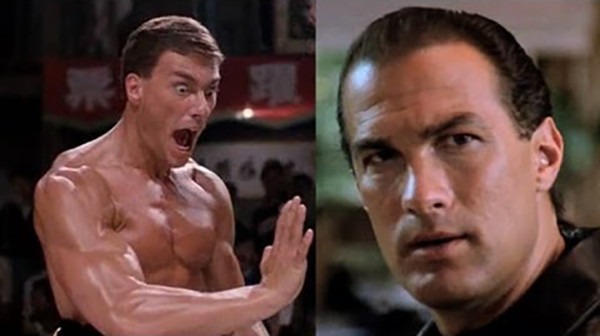Creepy, 2016.
Directed by Kiyoshi Kurosawa.
Starring Hidetoshi Nishijima, Teruyuki Kagawa, Yuko Takeuchi and Haruna Kawaguchi.
SYNOPSIS:
Takakura, a recently retired police detective with a specialty in serial killers, has moved to a new neighborhood with his wife Yasuko. The pair quickly learn that their neighbors are of an odd sort, particularly the off-putting Nishino. When Takakura begins investigating a years-old unsolved case, he slowly begins to suspect that Nishino was involved.
Horror doesn’t necessarily have to be about monsters, ghosts, masked killers and bodily mutilations. Horror, that is the state of being horrified, can come from a vast variety of sources. Some of them are big, like a classic zombie apocalypse, and some are smaller, like a good old fashioned haunted house. But horror can go even smaller than that, stemming from something as simple as mistrust and paranoia between human beings. Your neighbor gives you a weird look that rattles you, or says something a bit off, and before you know it the unassuming fellow next door is more unnerving than any vampire or ghost. Very few horror films are able to capture this kind of everyday horror, this ability to find the unsettling, the subtly unnerving, in something only marginally out of the ordinary.
Kiyoshi Kurosawa’s latest film, the aptly named Creepy, spends much of its run time in this very particular kind of horror, and while it becomes a bit less subtle in the final third, the result is one of the most quietly terrifying horror films in recent years.
Formally, Creepy is incredibly restrained, or perhaps a better word might be controlled. The camera and editing seem almost lethargic, often depicting scenes from straightforwardly framed wide shots that seem to keep the cast at arm’s length from the audience. Music is used incredibly sparingly, only popping up in a small handful of scenes. It’s so rare, in fact, that when the soundtrack does make an appearance it almost feels unwelcome for its abruptness. The film, through this sort of formal calmness, lures you into a relaxed state, which makes it that much easier for it to slowly get under your skin.
For the first hour and twenty minutes or so, Creepy is about one thing: ensuring that the audience feels as uncertain and paranoid as Hidetoshi Nishijima’s lead. Is the weirdo neighbor, played by Teruyuki Kagawa, really a serial killer, or is he just kind of strange? Kagawa’s performance in the first two thirds captures the feeling of that person we’ve all met at least once who seems friendly, but unnervingly off. Nishijima, meanwhile, quickly starts to seem increasingly unhinged. His obsession with the cold case that has brought him partially out of retirement begins to leave him visibly frayed, and as his suspicion is his neighbor grows, we come to trust our protagonist less and less. Is this a case of a former cop, perhaps riddled with more than a little PTSD, jumping to potentially dangerous conclusions? Or is something sinister really going on? We have no idea, and it remains pretty unsettling.
Of course, this is all possible thanks to the phenomenal performances by the two leads. Both Nishijima and Kagawa nail their respective roles, and the supporting cast all deliver in kind.
But then….something happens. No spoilers, but suffice to say the film changes gears rather abruptly and with an almost blase casualness. That uncertainty and paranoia that drove the majority of the film vanishes. Of course, it’s replaced with another perfectly acceptable MO: a ruthless and soul-churning sense of hopelessness in the face of eerily casual evil. The questions that drove the first two thirds of the film and essentially answered, but now the audience and protagonist are left to helplessly watch what comes next – and it isn’t pretty.
This tonal shift may wind up being the make or break moment for many viewers. On the one hand, many find themselves wishing that the film had drawn out that uncertainty and mystery. On the other hand, doing so many have gotten wearisome and the sudden shift in purpose and vibe may have been a welcome change of pace. For the most part, the sudden shift works, and the film remains tense and harrowing. But the shift may be too jarring for some.
Creepy is absolutely at its best when it’s getting under your skin not by shocking you, or presenting its depiction of evil and darkness directly, but leaving the audience subtly unnerved and creeped out. The film, for the most part, plays on uncertainty, and of the many films to play the “is the hero just nuts?” card, Creepy is among the best.
There are precious few horror films these days that plays it as subtle and low-key as Creepy does, at least up to a point. It’s so subtle, in fact, that the “is it horror?” debate will almost certainly come up as soon as it has a wide North American release of some kind (easy answer: it is) in the same way people debated The Witch (which was ALSO a horror movie, you ninnies). And even though Creepy elects to go a bit less subtle for its closing act, the fact remains that Kiyoshi Kurosawa has delivered one of the more hard-hitting and fascinating horror films in some time.
Flickering Myth Rating – Film: ★ ★ ★ ★ / Movie: ★ ★ ★ ★
Thomas O’Connor
. url=”.” . width=”100%” height=”150″ iframe=”true” /]
https://youtu.be/b7Ozs5mj5ao?list=PL18yMRIfoszEaHYNDTy5C-cH9Oa2gN5ng











